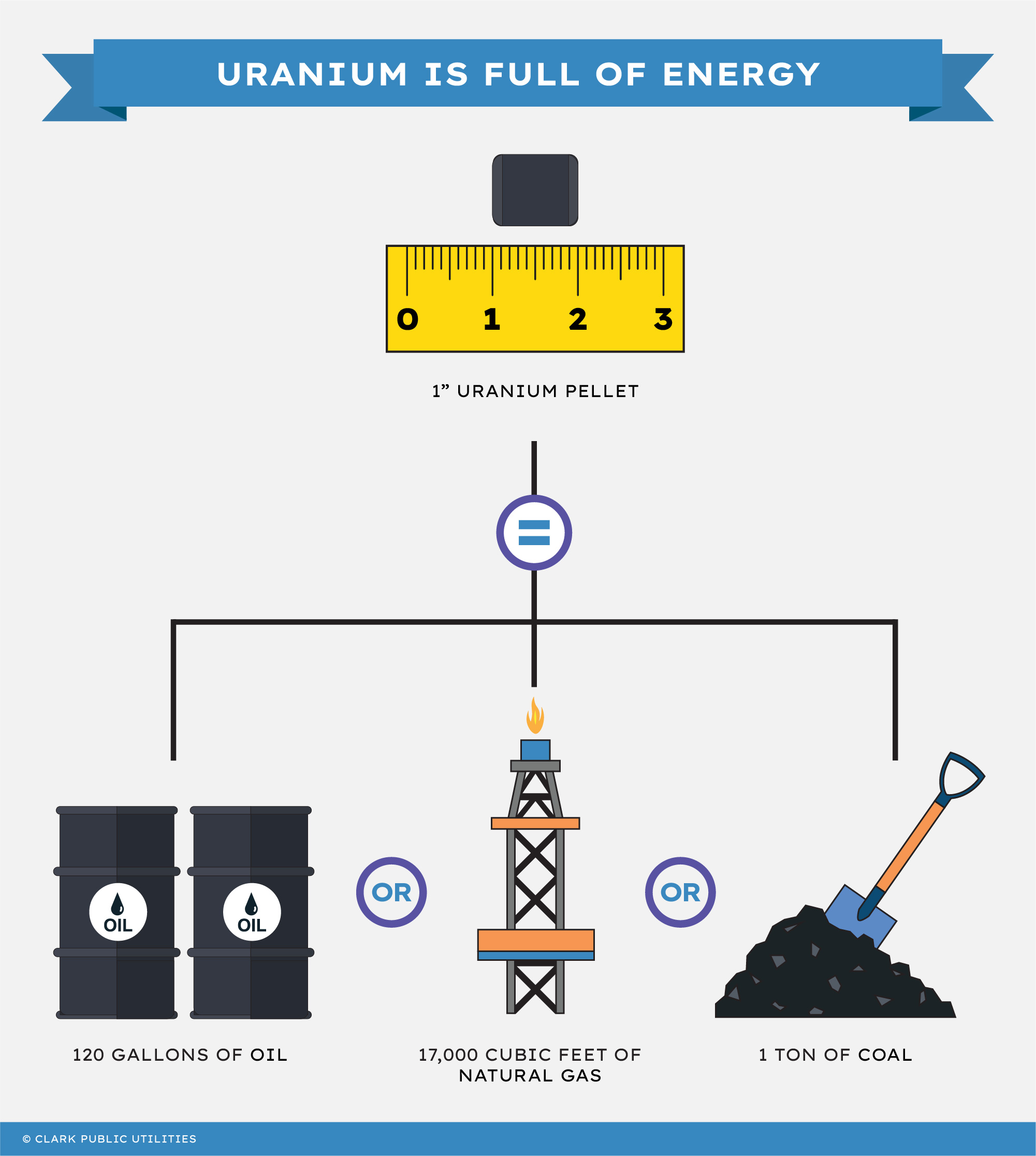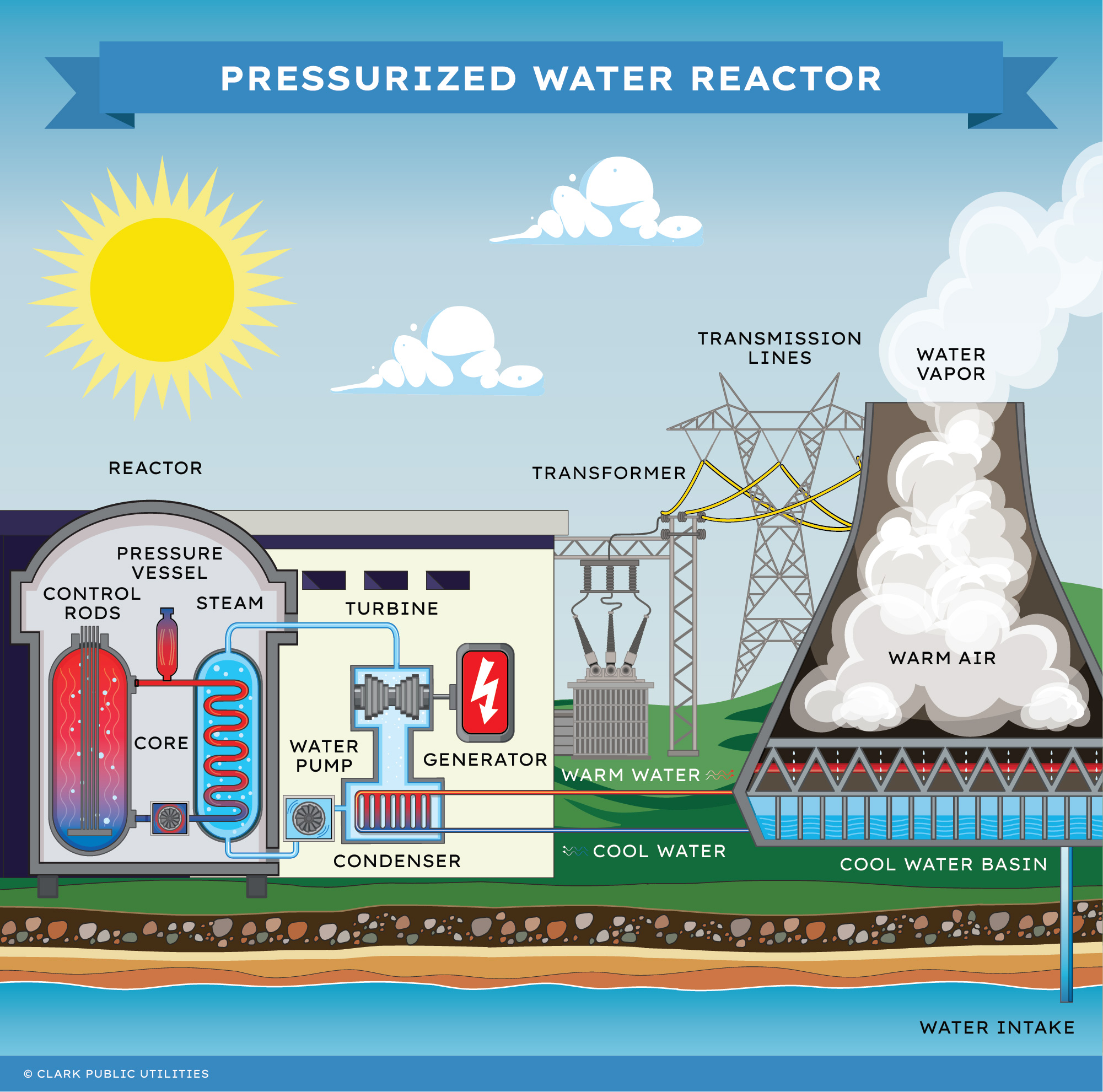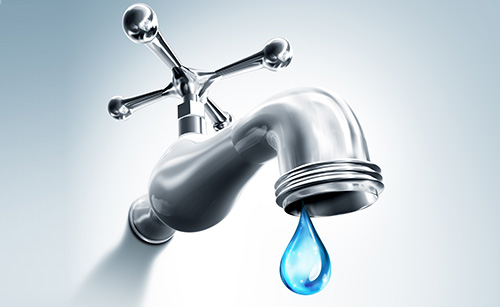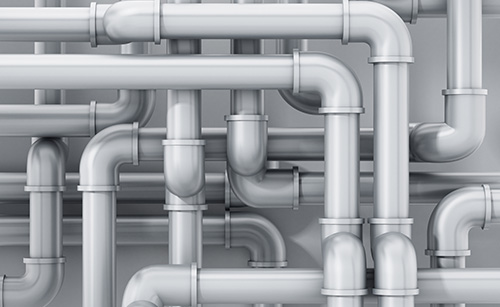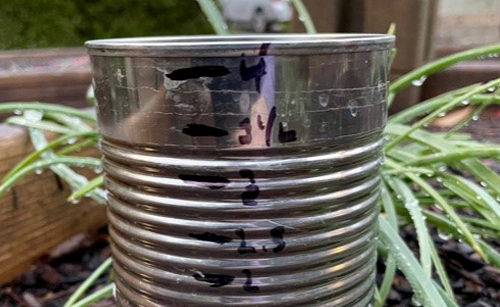Nuclear power plants, also known as power stations, do not burn fuels to produce heat. Instead, they use nuclear fission, which is a reaction that involves the release of huge amounts of energy.
The United States has 56 nuclear power plants in 28 states. The majority are in the eastern part of the country but there are several in California and the Columbia Generating Station is located here in Washington State. Nuclear power stations are among the biggest power stations in the world.
How do nuclear power plants work?
Uranium fuel is organized in the reactor core, along with retractable control rods that regulate the fission rate. The reactor core is kept underwater to prevent overheating.
The cooling water transfers heat from the fission process in the reactor core to a heat exchanger and on to a steam circuit, which drives the turbine. The two circuits are kept separate to prevent radioactive cooling water from contaminating the steam that leaves the reactor and passes through the turbine.

The largest nuclear plant in the world is in Kashiwazaki-Kariwa, Japan. With its seven reactors, it can produce 8,000 megawatts of electricity, while a typical nuclear power plant produces between 1,000 to 4,000 megawatts by comparison.
Control rods manage heat production
Control rods manage the heat production in a nuclear power plant. Control rods are made out of elements like boron or hafnium that absorb neutrons quickly. When the rods are raised out of the core, they absorb fewer neutrons and increase the fission rate, which makes more heat. Lowering the rods into the core decreases the fission rate and heat production. The only way to “shut off” a reactor is to completely lower the rods into the core, but this is only done during refueling.
The nuclear reactor core holds the fuel. A reactor’s walls are made of thick steel for two main reasons: to maintain inside pressure and to contain any radioactive materials such as gasses and fluids. The outer walls of the power station are made from concrete that is reinforced with steel in order to add more protection against radiation. There is also a device called a pressurizer that makes sure the cooling water in the reactor circuit is under high pressure so it remains liquid and doesn’t turn to steam.
Nuclear fission: The basics
The fission process seems complicated, but the simplest explanation is that a nuclear reaction is caused when an atom (uranium in this case) splits apart into smaller atoms. Uranium atoms are considered unstable, so the collision splits (fissions) into two smaller atoms, releasing the energy that once held the heavy uranium nucleus together.
The energy becomes heat that is used for steam production. Radiation is another by-product of this process. The fission (splitting of the atom) also frees additional neutrons that go on to collide with other nuclei. This keeps the fission chain reaction going.
Uranium fuel remains in the reactor core for about four years. During this time, the fuel loses some of its potency because fission is ongoing.
Every 18 months more uranium is added to keep fission going.
When the fuel assembly reaches the end of its lifetime, it is removed from the core and sent to a spent fuel pool — basically a water-filled reservoir inside the power station. The reservoir is a shield against radiation and will hold the fuel until it is picked up by a special vehicle, where it will be moved to an underground storage facility, where it will remain forever.
Is nuclear power safe?
Nuclear energy is here to stay,especially as adults talk more and more about green energy, since it produces no greenhouse gas emissions. But because nuclear energy was developed after the atomic bomb, and because of disasters like Three Mile Island, Chernobyl, and Fukushima, many people feel nuclear energy is dangerous and shouldn’t be used to make electricity. Big disasters get a lot of attention, but these are the only major accidents to have occurred in the 60-year history of nuclear power generation. There are nuclear power plants in over 36 countries.
In reality, many advancements have been made when it comes to generating electrical energy using this method, so it’s safer than coal, oil, or natural gas generation. More workers are hurt, even losing their lives, from accidents and air pollution in coal and oil plants than any other type of electrical generation.
Changes that have made nuclear power safer:
Building design and plant operations have changed to reduce accidents
Many plant operations have become automated to minimize human mistakes. Equipment is now monitored and regularly tested for equipment or operator failures. Computers also check, recheck, and check processes again to make sure everything is working properly. Can you imagine checking your math answers 3 or 4 times before turning in your test? This is called redundancy, but it keeps the nuclear plant safe, and it works!
Nuclear reactors have more safety measures
Since the Chernobyl accident in 1986, the nuclear reactor has been redesigned. Today, reactors have secondary safety measures – and more, as well as containment structures to prevent radiation leaking to nearby cities and towns. Another advancement is the addition of seismic shutdown measures. If the plant monitoring systems detect an earthquake the computer systems will automatically, and safely, start a shutdown process.
Using liquid sodium cools nuclear reactors faster than water
One innovation that has made nuclear energy safer is in how the reactor is cooled. Because the process of nuclear fission creates heat, a lot of water is needed to cool the reactor. Massive amounts of water! Today, plants are switching over to using liquid sodium instead of water to cool the reactor. This allows nuclear power plants to be smaller in size, not consume large quantities of water and gives them a safer way to cool the reactor down.
International collaboration has made nuclear power plants safer
In the past, countries liked to keep their nuclear power plant plans to themselves, but as anyone that has worked on a group project knows, you get better results if more people have input in the project. Today, the international community collaborates to improve safety. There are several international organizations in charge of safety:
- The World Association of Nuclear Operators reviews every nuclear plant every four years! They also work with employees to share experience and expertise to make the nuclear community safer.
- There is also a convention on nuclear safety that 72 countries attend and together they work to create safety improvements and address environmental concerns.
- In the United States, power plants are overseen by the Nuclear Regulatory Commission, and they require over 2,000 hours of inspections each year. The inspectors usually live near the plant with their families and have access to the plant 24/7.
Nuclear waste storage is undergoing improvements, too
Solutions for the storage of nuclear waste has also made advancements. For example, in Onkalo, Finland, they are developing a storage facility more than 450 meters down into the earth. They’ve created corrosion resistant storage canisters that will be stored in clay for hundreds of thousands of years. It’s the first deep disposal site in the world!

While it’s known that moderate-to-high levels of radiation exposure are extremely harmful, it’s not known how harmful low levels of exposure are. For example, a UN report about the Fukushima disaster found no documented health effects related to radiation, except for one plant worker who died due to radiation exposure.

